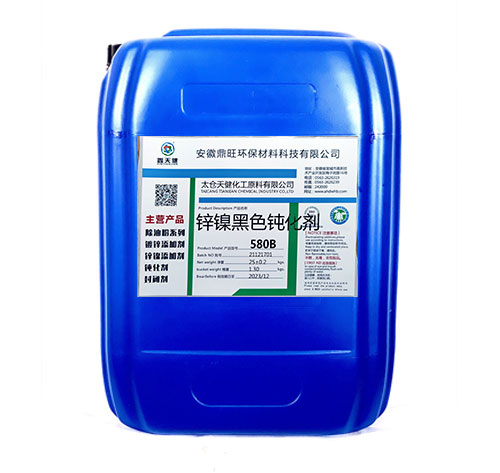碳钢钝化剂-Chemosphere:三种钝化剂降低酸性土壤中镉迁移率和水菠菜吸收镉及抗氧化效果
【欢迎您关注--农业环境科学】
华中农业大学胡红青教授团队通过盆栽试验,评估了水稻秸秆生物炭、沸石和磷矿粉钝化剂降低酸性土壤中镉迁移率和水菠菜吸收镉以及抗氧化反应的效果。相关成果发表于Chemosphere(IF=)。
论文第1作者为华中农业大学Saqib Bashir博士,通讯作者为胡红青教授,朱俊、付庆灵参与了试验研究。
Highlights
Alkaline amendments (Biochar, Zeolite and Rock phosphate) are suitable for acid cadmium contaminated soil.
Rice straw biochar has ability to immobilize Cd and decreased Cd bioavailability to Water spinach.
FTIR analysis clearly indicate the mechanism of Cd immobilization through complexation.
Abstract
Agricultural soils contamination with cadmium (Cd) has become a serious concern through anthropogenic activities. The possible environmental friendly solutions for Cd are required to address its mobility through various cost effective amendments. This study aims to evaluate the impact of rice straw biochar (BC), zeolite (ZE) and rock phosphate (RP) stabilizers to minimize the potential risk of Cd mobility and its uptake by water spinach in acidic soil through pot experiment. Concentration of Cd in TCLP and CaCl2 extract gradually decreased with the increase of amendments (BC, ZE and RP) rates. The increase in BC addition from to 3% significantly decreased CaCl2-extractable Cd by – and TCLP extractable Cd by – respectively, over control. Whereas, RP addition decreases – and in CaCl2 and TCLP extractable Cd respectively, as compared to control soil. The addition of BC, ZE and RP decreased Cd uptake by – with and 3% application rate, respectively. Moreover, the antioxidant enzymes activity i.e., superoxide dismutase (SOD) and peroxidase (POD) decreased with the addition of BC, ZE and RP under Cd stress. In conclusion, rice straw biochar could be highly recommended as a safe stabilizer to immobilize Cd in polluted agricultural soils.
人为活动导致的农田镉污染需要各种具有成本效益的修复手段来解决。水菠菜(Ipomoea aquatica)作为一种常见蔬菜,其吸收镉的能力约为 mg kg-1,已远高于世界卫生组织提出的镉浓度标准(0.2 mg kg-1),因此需要向镉污染农田施加钝化剂以减少水菠菜对镉的吸收量并有效固定土壤中的镉。虽然已有研究表明各种钝化剂对镉污染土壤叶类蔬菜生长有影响,但水稻秸秆生物炭,沸石和磷矿粉对水菠菜生长、吸收镉和固定土壤中镉的影响尚未见任何报道。生物炭来源广泛,可有效改善土壤理化性质,但对镉的钝化效果还缺少与磷矿粉和沸石的比较。

该论文通过盆栽试验,评估了水稻秸秆生物炭,沸石和磷矿粉钝化剂降低酸性土壤中镉迁移率和水菠菜吸收镉以及抗氧化反应的效果。结果表明,随着三种钝化剂添加量的增加,TCLP和CaCl2提取态镉浓度逐渐降低。与对照相比,添加量为1.5%-3%的水稻秸秆生物炭显著降低CaCl2提取态和TCLP提取态镉含量,下降幅度分别为65.8%-72.9%和31.2%-37.7%。磷矿粉也可使CaCl2和TCLP提取态镉含量显著降低,分别降低了53.4%-65.2%和11.7%-19.5%。添加量为1.5%和3%时,水稻秸秆生物炭,沸石和磷矿粉使水菠菜对镉的吸收量减少22.9%-61.8%。且在镉胁迫条件下,添加三种钝化剂可降低水菠菜抗氧化酶(超氧化物歧化酶SOD和过氧化物酶POD)的活性。
供试三种碱性钝化剂均适用于改良酸性镉污染土壤,且水稻秸秆生物炭对镉固定效果更好,也减少了水菠菜对镉的吸收,是减轻镉对水菠菜毒性的Z佳钝化剂。运用FTIR(傅立叶变换红外光谱)技术手段还揭示了三种钝化剂通过络合作用固定镉的机理。总之,水稻秸秆生物炭作为一种安全有效的钝化剂,可被广泛应用于镉污染农田土壤中。
论文引用格式:
Bashir S, Zhu J, Fu Q L, et al. Cadmium mobility, uptake and anti-oxidative response of water spinach (Ipomoea aquatic) under rice straw biochar, zeolite and rock phosphate as amendments[J]. Chemosphere, 2018, 194, 579-587.
DOI: